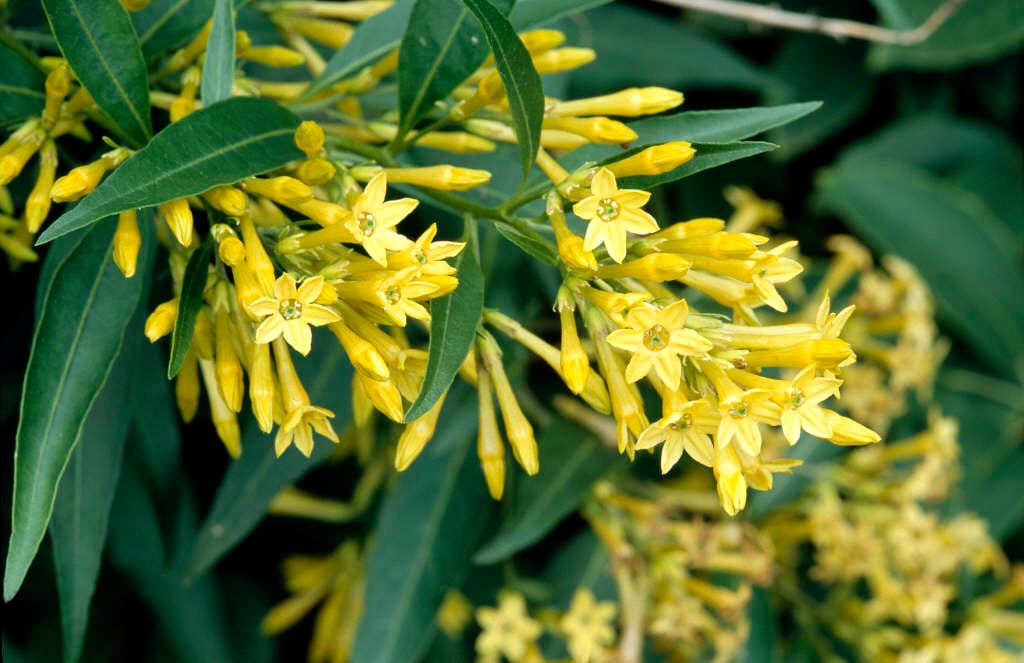Size
Ultimate height
1.5–2.5 metresTime to ultimate height
10–20 yearsUltimate spread
1–1.5 metresGrowing conditions
Moisture
Moist but well–drained, Well–drainedpH
Acid, Alkaline, NeutralColour & scent
| Stem | Flower | Foliage | Fruit | |
| Spring | Green | |||
|---|---|---|---|---|
| Summer | Green Yellow | Green | ||
| Autumn | Green Yellow | Green | Brown | |
| Winter | Green |
Position
- Full sun
- Partial shade
Aspect
South–facing or East–facing or West–facing
Exposure
Sheltered Hardiness
H3Botanical details
- Family
- Solanaceae
- Native to GB / Ireland
- No
- Foliage
- Deciduous
- Habit
- Bushy
- Potentially harmful
- Harmful of eaten. Wear gloves and other protective equipment when handling Pets (dogs): Harmful if eaten - see the HTA guide to potentially harmful plants for further information and useful contact numbers
- Genus
Cestrum can be shrub or scrambling climbers, with simple, evergreen leaves and tubular or salver-shaped flowers in terminal and axillary clusters, followed by red or black berries
- Name status
Correct
- Plant range
- S America
How to grow
Cultivation
Under glass grow in containers using peat-free, loam-based potting compost in full light with good ventilation and shade from hot sun. Water freely in summer and keep just moist in winter. Can be grown outdoors in a sheltered sunny site and well-drained soil
Propagation
Propagate by seed in containers in a cold frame in spring or by softwood cuttings in summer
Suggested planting locations and garden types
- Patio and container plants
- Mediterranean climate plants
- Low Maintenance
Pruning
Pests
Generally pest-free
Diseases
Generally disease-free
Love gardening
Sign up to receive regular gardening tips, inspiration, offers and more
View our Privacy Policy
Get involved
The Royal Horticultural Society is the UK’s leading gardening charity. We aim to enrich everyone’s life through plants, and make the UK a greener and more beautiful place.

